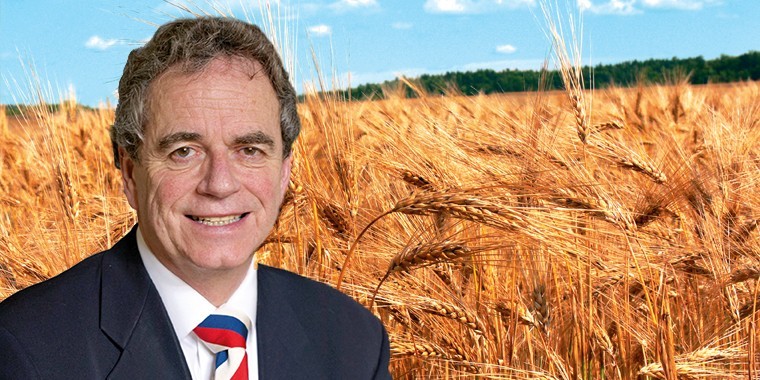Whether it’s fake news, lack of good intelligence gathering or to quote one of George W Bush’s gaffes “mis underestimation,” there is a big credibility gap between the on the ground crop figures and the last United States Department of Agriculture estimates announced in September.
On world wheat production, at best it’s 14 million tonnes above local estimates, at worst it’s 30 million tonnes. They actually increased world production by three million tonnes since August, leaving Russia, Australia, Canada and India shaking their heads in disbelief.
For the UK, the dynamic has changed. In August we were in control of our wheat supply and demand. We were geared to import rather than export parity prices. Despite only producing about 13.8 million tonnes of wheat, with about 100,000 metric tonnes (mt) of exportable surplus, we are now almost able to export wheat from the south and west coast and we are vulnerable to imports to the north and east from European Union Black Sea countries.
What changed is the UK has front end imported a large amount of wheat – it could be 400,000 mt so far. That together with an early harvest has meant there is no physical shortage of wheat in the UK, and won’t be this side of Christmas. Also the Vivergo ethanol plant is closing at the end of September: that means about 300,000 mt is taken out of the demand side of the balance sheet.
Russia has defied gravity, and continues to export at a frantic pace: in doing so, it has driven the world wheat prices down. So all of these factors has shifted the UK market balance and for the next few months, we will be back to having to follow the price trends in the European Union, Black Sea and America.
Speaking of fake news, Russia has done a really good job of saying one thing and doing the other on wheat exports. Three times in the last month, various Russian spokesmen have leaked news that Russia was either going to restrict exports or apply an export tax on wheat. The market reacted by going up: guess what, Russia sells more into the rise then issues a denial and the market comes down again.
There are suggestions that while officially there are no plans to restrict exports, at the execution level (unfortunate term) there are difficulties obtaining export licences for the new year. So Russian exports may dry up, even before the Baltic freezes over. There must be a level at which they will stop. It is not a country where rising domestic prices and bread queues are likely to be tolerated.
I did say in my August and September articles that wheat needs selling, on old and new crop. Actually, even though £20 per tonne has since been squeezed out of the UK futures market, the levels remaining are still pretty good. For example: like most farmers, you may have sold some wheat, pre harvest, at £140 per tonne as that was better than your planted budget figure. If you were lucky, you sold some more at £180 during August. So with the remainder worth £160/£165, you should still be able to achieve an average of at least £160.
So if you need the space and cash pre Christmas get on and sell. However, having had this huge correction in UK price, there is reason to believe that prices could recover by say April next year. Last year we had a larger wheat crop: it was already starting to run short, even before the DEFRA bombshell in May.
So we had unprecedented imports through until harvest and the price went through the roof. OK, as I said, we have had those imports front end rather than back end. But by next April, Russia may have run out of wheat for export and maybe all the dry areas from the Ukraine, EU, Australia will have had enough rain to allow winter plantings, ok or not.
Oh, by the way there is the little matter of Brexit which at the end of March could change everything. So yes, having some wheat to sell April/May/June next year could be a good idea.
Barley has also fallen in price but not to the same extent as wheat. In fact, even though there is supposed to be a UK surplus of half a million tonnes plus, barley looks well under pinned on price. Its inelastic demand for the camels and goats of North Africa and in the Middle East means it will all be needed.
So while the dogs (the trade) bark in the night, the caravan (USDA) carries on.




